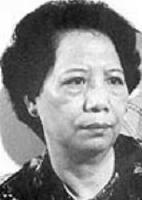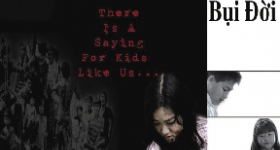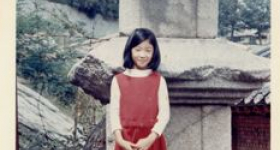Vincent Chin
Thirty years ago this past weekend, Vincent Chin died in a Detroit hospital bed from head wounds sustained in a vicious attack by Ronald Ebens and his stepson Michael Nitz. While every year a spate of articles remembers his death to measure the distance we’ve traveled between then and now, this year’s anniversary has been unique. The past week has seen a flurry of retrospective articles in the Detroit Free Press and across the blogosphere, a national conference organized by Asian Pacific Americans for Progress titled “Vincent Chin 30: Standing Up Then and Now,” a House resolution recognizing the impact of Chin's death, and a widely circulated article in the New York Times by UC Hastings dean, Frank H. Wu. All have evoked Chin’s murder to call for a reinvigoration of the Asian American civil rights movement it inspired.
Readers of these pages will likely be able to recount the events of the night of June 19, 1982, like a rosary, so central has the story of his murder become to Asian American politics and culture. But like all origin stories, this one is worth repeating.
“These aren’t the kind of men you send to jail.”
On that Saturday night, Chin and a group of friends were at the Fancy Pants strip club in the Highland Park neighborhood of Detroit to celebrate his bachelor party. There, the group got into an altercation with Ebens and Nitz. Nitz had recently been laid off from his auto industry job. A dancer later recalled that either Ebens or Nitz had yelled at Chin, “You motherfuckers are the reason we’re all laid off!” Objecting to Ebens’ comments, Chin approached him and punched him in the face, leading to a scuffle in which Ebens mistakenly swung a wooden chair into Nitz’s head. All of the men were promptly ejected from the club, but the fight continued into the parking lot, where Ebens and Nitz began to pursue Chin and his companions with a Louiseville Slugger.
Twenty minutes later, they found Chin at a nearby McDonald’s. Ebens and Nitz chased Chin into the middle of Woodward Avenue, where Ebens savagely swung his bat into Chin’s legs. Witnesses claimed that Nitz held Chin down while Ebens beat him in the chest and head multiple times. Before slipping into a coma, Chin uttered his now famous last words, “It’s not fair.” He was buried on what was supposed to be his wedding day.
Ebens and Nitz were arrested at the scene, but released the same night. They later pled down a second-degree murder charge to manslaughter, which resulted in a sentence of three years probation and a $3,000 fine plus $780 in court fees. Judge Charles Kaufman, who was held as a POW by the Japanese during World War II, offered the following explanation: “These aren’t the kind of men you send to jail… You fit the punishment to the criminal, not the crime.” Neither Ebens nor Nitz ever saw the inside of a jail cell.
Detroit citizens were outraged. Ebens’ employer, Chrysler, terminated him a few weeks later, citing his felony conviction. In fact, when news first broke of Ebens’ involvement in Chin’s death, Chrysler capitulated to the United Auto Workers’ threat to strike if it continued to employ Ebens; Chrysler immediately placed him on unpaid leave. This was ironic because the UAW had played a large role in fanning the flames of the “Japan panic” motivating Ebens and Nitz.

Lily Chin
But by far the most significant reaction to Kaufman’s decision was the galvanization -- indeed, weaponization -- of the Asian American community. Its reaction was so powerful, and the coalition it formed so broad-based in terms of class, ethnicity and age group, that commentators have frequently claimed that no coherent Asian American identity truly existed before this moment. Months of vigorous and highly publicized protest, many of them led by Chin’s highly sympathetic and passionate mother Lily, led to the opening of a federal civil rights investigation into Ebens and Nitz’s case.
Years later, after being cleared of all charges and successfully appealing the 25-year sentence from the federal conviction, an unrepentant Ebens told Michael Moore (then a writer for the Detroit Free Press) that his life had been ruined by Asian American groups who demonized him in order to advertise their plight, and that the only reason he hadn’t committed suicide yet was because he didn’t want to give them the satisfaction.
Legacy
It’s certainly worth remembering Chin’s case as a way of reminding ourselves that the attainment of civil rights is never a guarantee of their protection. For many at the forefront of the Asian American social justice movement, Chin's case continues to serve as a sobering reminder of how deeply broken and racist our criminal justice system still is, and how desperately we need alternatives like restorative justice. Today, the United States is no more secure about its domestic or international identity than it was three decades ago. Asia still remains a necessary enemy, as do Asians themselves. To make matters even more precarious, anti-immigrant rhetoric has in many ways devolved and intensified since Chin’s murder. It hardly requires a Vincent Chin to remind us that our community needs to maintain its vigilance.
So, instead of proffering that reminder, I thought I’d consider a few of the persistent questions that Chin’s case raises. Not to answer them, however -- these aren’t the kinds of questions that have clear answers -- but to shake up some of the comfortable truths and assumptions that have settled in over the last thirty years.
It cannot be denied, for instance, that one of the most perplexing legacies extending from Chin's case is the contradiction it highlights at the heart of the Asian American movement. Many have argued that what killed Vincent Chin that June night was Ebens’ lumping together of all Asians under the strangely specific yet radically unspecified category, “Japanese.” And yet, theoretically, the strength of Asian American activism and politics comes from an analogous generalization.
In his retrospective on the continued importance of Vincent Chin to Asian American activism, Frank H. Wu criticizes the Pew Research Center’s recently released study on “The Rise of Asian Americans.” After joining numerous criticisms of the study’s reinforcement of the “model minority myth,” Wu warns of the study’s insufficient differentiation between the ethnicities it groups under the term “Asian American.” It’s here that his argument gets murky. “[T]he more important criticism is this,” he writes: “When it comes to race, nuance matters.”
This is precisely what we want to hear, and not only because it sounds so right. The long project of raising awareness and promoting understanding conforms to the advice that grief counselors give to victims of sudden loss: It gives us something to do, so we feel active rather than passive. That’s certainly not trivial. But how nuance is to be maintained when the cure -- a reinvigoration of Asian American identity and activism -- relies on the same mechanism as the disease, Wu never explains.
What we can confidently say is this: nuance would not have saved Vincent Chin. The violence Ebens inflicted on Chin was a fatal performance of how racialization always works. Indeed, the tragedy of Chin’s death is not that Ebens was mistaken. On the contrary, Ebens and Nitz made Chin Japanese. The lesson of racialization that Chin’s murder makes so utterly clear is that race doesn’t exist outside the dynamics of power and violence.
This brings me to something that has always bothered me about narrations of Chin’s murder that has to do with this point about race and power. Nearly every account of the events of June 19 mentions Ebens’ misidentification of Chin’s ethnicity. This perplexes me not only because it is so dramatically beside the point, but also because it suggests that had Ebens known the truth of Chin’s race (whatever that would mean), things might have turned out differently. Chin might still be with us. He might have married his fiancée Vicki Wong, and he might have lived into ripe old age, as Ebens has. (Nitz was killed in a motorcycle accident.) The very premise of such a claim undermines the theories of racialization and power undergirding the Asian American movement.
And yet something about this narrative convention does make sense. The necessity of calling Ebens' attribution a mistake betrays a specific ideological desire. Lurking behind the coalitional power of the Asian American label is the promise that its efficacy will one day obsolesce, and on the heels of that glorious moment, the content of the ethnicities it strategically held together would be redeemed in a kind of multicultural Utopia.
It’s a beautiful idea. An inspirational one. But the fundamental question it poses is extremely difficult to contend with: Can we construct our own racial identity?
Because race never belongs exclusively to the oppressed or the oppressor, the answer can only be a brutish "no." I'd argue, however, that one of the central legacies of Chin’s murder is that sometimes impossibility must be forced into the realm of possibility. If Chin's death and Kaufman's decision gave birth to the impossible community of Asian America, then our task now is to use all the tools at our disposal -- cultural, legal, social -- to brutishly wrench that "no" into a determined "yes." If we owe Chin anything, we owe him that.

Chin and fiancée Victoria Wong










Comments